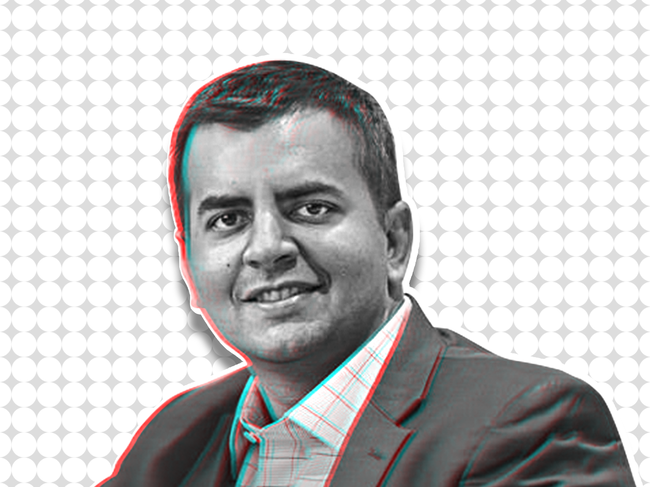 ETtech
ETtechFrom just 4,000 units a month in June 2021, the monthly run rate reached 80,000 units towards the end of 2022, a 20x growth. From less than 1% penetration in 2021 to almost 6% in just a year, the EV revolution in India has not been restricted to only the urban centres but is proving to be a pan-India phenomenon.
Elevate Your Tech Prowess with High-Value Skill Courses
| Offering College | Course | Website |
|---|
The global EV transformation started in the West with companies like Tesla and more recently Rivian, Lucid, and traditional European carmakers like BMW, Mercedes, etc joining in.
These companies have focused on products like luxury sedans, large pickup trucks and other formats relevant to a Western audience. Even the cheapest Tesla Model 3 will cost upwards of $50,000 (or Rs 50,00,000 in India).
For most people in the world, mobility doesn’t mean luxury products. In India, more than 99% of (mobility) products sold are priced between Rs 1,00,000 and Rs 50,00,000. Same is the case in Southeast Asia, LatAm, Africa and to a large extent some developed geographies like Europe and Japan.
Discover the stories of your interest

This price point encompasses product segments from twowheelers including scooters, motorbikes, and small, midsize sport utility vehicles and cars. Traditionally in the ICE era, the Japanese dominated this segment – with iconic companies like Honda, Suzuki, Toyota, Nissan, Yamaha, Kawasaki etc – by developing core technologies, manufacturing at scale and controlling the global market.
This, in turn, propelled Japan as one of the top industrial nations of the world. Today, it is India’s destiny and opportunity to build world-class products in these segments and become a global leader. Our strengths as one of the largest and fastest growing domestic markets, entrepreneurial and innovative companies, strong government and policy momentum, and world-class talent and capital access will enable a strong play. To achieve this ambition, we need to have a clear vision and operate with speed and without falling for fear and uncertainty driven by vested interests.
There are some fundamental misconceptions around EVs. Whether by adopting this technology at scale, we will end up increasing our dependency on China, since ‘Lithium’ is owned by China, the answer is ‘no’.
China doesn’t hold a monopoly on Lithium. Most lithium mines are located in Australia, Chile, and Argentina.
Where China is currently dominant is in the midstream processing of lithium. By focusing on localising the midstream processing of lithium and partnering with lithium and other mineral producing countries, India is already building an alternative supply chain for ourselves and the world.
This is India’s opportunity to seize the 21st century. This will be India’s decade of EV transformation and becoming a global EV hub. India will have to focus on a four-pronged strategy.
Build world-class aspirational products
The $100 billion Indian auto market will rapidly transform into EVs as companies embrace the disruption being caused by electric and connected technologies, modern design aesthetic and reimagine auto products for a new aspirational consumer.
These products, if built as best-in-class on performance, technology and design, can become global benchmarks in their respective segments.
Invest in R&D and build the core technology
The internal combustion engine was the centrepiece of the ICE era. Analogously, the Lithium cell is the centrepiece of the EV era. Lithium tech is far from being a commodity. There is a lot of innovation to be done to improve the performance, safety and cost of cells. Improving the energy density and fast charging speeds of lithium cells, bringing sodium ion cells into real world usage from the lab, accelerating the solid-state cell roadmap, making cells work better in our hot climate, are some of the areas we can lead the world by investing into our own core R&D.
Build local supply chains
We need to build local supply chains for new materials and components. We can just be final assemblers of the products! This includes motors, rare earth magnets, power electronics, semiconductors, lithium processing, and electrode production. We can leverage India’s software, chemical and pharma industries, as well as our growing electronics manufacturing base, to invest in these areas.
Attract best talent
The above three strategies won’t be possible unless we become a global talent hub to attract both non-resident Indian and global talent to work with us in this journey. We have to prioritise IP creation, reward tech talent at global standards and create an enabling ecosystem for such a multidisciplinary talent ecosystem to collaborate and thrive.We are committed to this mission and to leading the way. We will do whatever it takes to achieve this!
(The writer is cofounder and CEO of Ola Cabs and Ola Electric. The views are personal)

















 Get Unlimited Access to The Economic Times
Get Unlimited Access to The Economic Times
